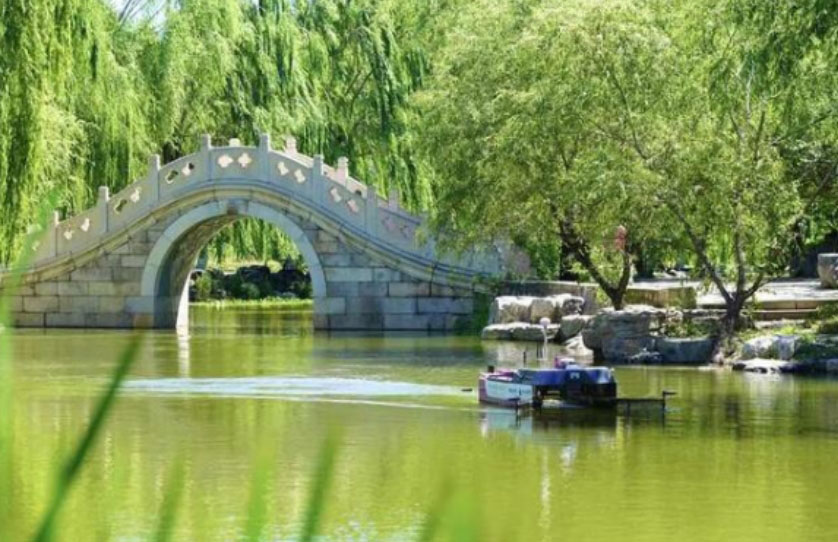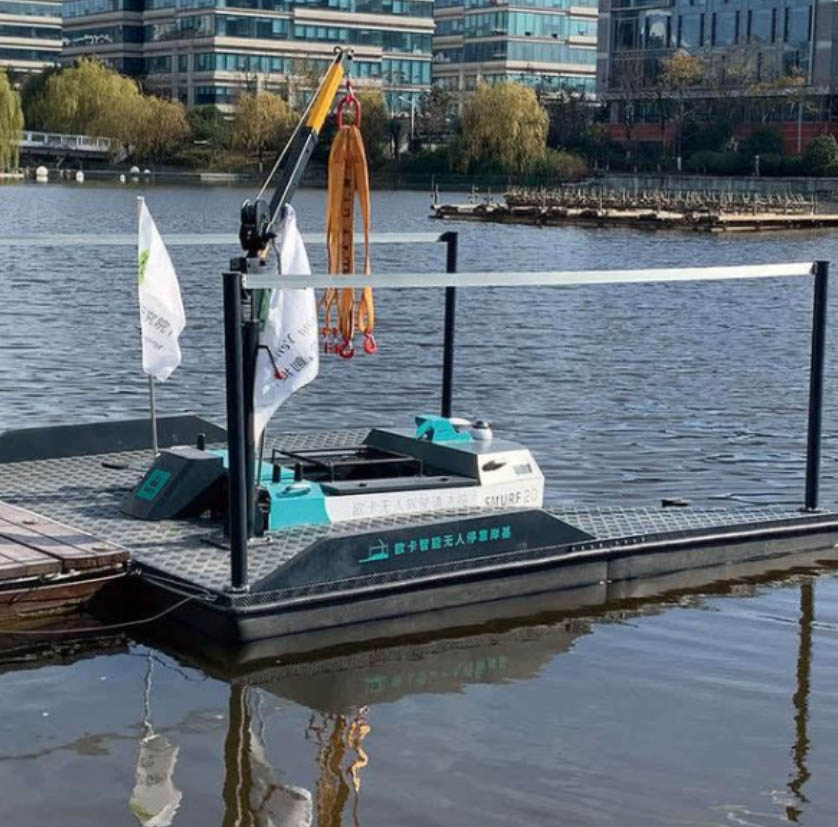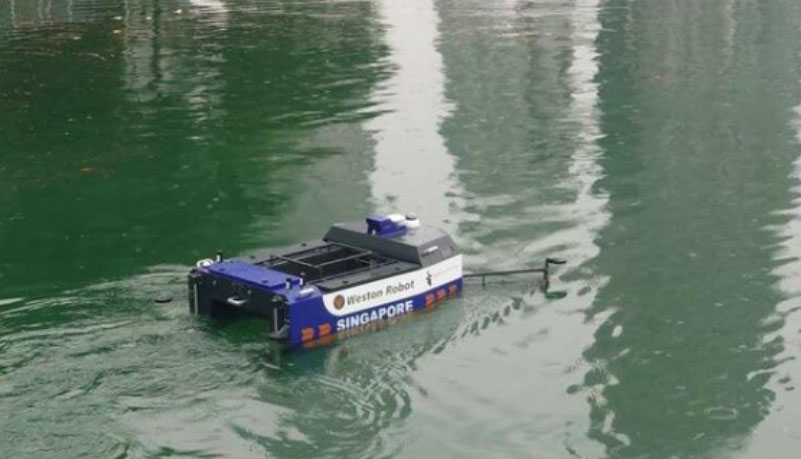Call Us Now
TEL: +86-4000988557; Skype ID: gfreex@hotmail.com;
WeChat: Troysupply_com; QQ ID: 8936906.

After some investigations, they believe that, "Whether it is from the country’s emphasis on ecological and environmental protection, river and lake governance, people’s livelihood considerations, and gaps in the market, the development of unmanned cleaning boats for water maintenance will be an existing issue. Social value, economic value, and things full of scientific and technological application value". As a result, Oka Zhibo was officially registered, with Zhu Jiannan as the company's CEO and Cheng Yuwei as the CTO.
What technology is used to build such an unmanned ship? Cheng Yuwei said: "In the beginning, our idea was very simple. It was to operate the boat to collect garbage by remote control, mainly considering the use in city parks and lakes and some southern cities inland rivers." But during the first product development process, they felt that Remote control alone is not enough. “Because remote control still requires someone to keep an eye on the ship’s work progress. Is it possible to let the ship clean the floating objects on the river?” They will autonomously control navigation, environmental perception and obstacle avoidance. And other technologies are being invested in R&D and design.
In Zhu Jiannan's view, any entrepreneur must experience the "three noes" state: lack of money, lack of people, lack of direction. They are also the same: the initial technical team was the juniors and classmates of the two, "even going to the school scholarship defense site to "dig people""; without funds to support R&D and design, Zhu Jiannan relied on participating in innovation and entrepreneurship competitions to earn bonuses and sell Accessories and sundries to earn a fortune. Until the first investment was obtained, the lack of supply chain resources became a major problem. They came to Dongguan, Guangdong, and "running from factory to factory, eating and living with the workers, until the development and production of the first prototype of an unmanned cleaning boat was completed."
"Although the first prototype was equipped with a self-developed control module, it was actually assembled with PVC pipes." Zhu Jiannan was very worried. "They will be working behind closed doors in the university laboratory." They decided to "run in small steps." ", put the first machine into the test of the actual scene, let the product continue to iterate quickly.
Zhu Jiannan feels that "products must be refined." They traveled to most of the rivers and lakes in China, "I want to collect more data for actual product testing, so as to increase the adaptability and reliability of the product by one more point." He laughed and said that because the company is very close to Xi'an Fengqing Park, frequent product tests on the park Jinhu have made it almost their "second home".

Parallel products and technologies to grow together with "angel" customers
From the first product prototype to the launch of three series of unmanned cleaning boats, the hundreds of boats sold in the past three years are all sold by the team one by one. Find about 5 model customers". But despite this, Zhu Jiannan is still very grateful to the early "angel" customers.
"As an innovative category, the previous generations of products will have various practical problems. We will sincerely inform them. We hope that they can feedback the problems during the use process, and the upgraded new products will be given away for free." He remembers the number one. The customer is an environmental protection company in Wuxi. "After we communicated with the company repeatedly, they were even willing to use the company's special R&D funds to support us and jointly complete product iterations."
With the feedback of customers' practical application problems, they continue to find more needs, and the speed of product iterative upgrades and technological innovation has accelerated. Cheng Yuwei said, "The two-meter-class unmanned cleaning boat originally developed is more suitable for small waters. When it is in large waters, it is a drop in the bucket. Therefore, large-scale cleaning boats of 4 and 5 meters are introduced; the original boats are similar to households. The robot sweeps the water surface, but the distribution of garbage on the water surface is not uniform. This requires the ship to clean up after the garbage is identified autonomously. Therefore, we have added recognition technology and developed a research and development for the garbage that is mostly distributed along the edge of the water. Edge cleaning function; the first-generation product requires staff to unload the ship’s battery for charging, but this method is not only dangerous, but also labor intensive. Therefore, we have developed a supporting autonomous charging system to allow the ship to return to the shore for charging. , And even developed an independent escape function, which can solve it by itself when it is caught by unknown obstacles, and truly realize unmanned operation."
Cheng Yuwei also told reporters that although the water regime of each water area is different, they have classified the types of water areas and the edge conditions of the water areas. To subdivide small problems, we will use algorithm learning and other technologies to let the ship quickly iterate and adapt to the scene." The most complicated water scene they encountered was an inland river with a lot of obscuration on both sides and various bridges. "If there are unmanned operations here, there will be problems such as poor signal positioning. We need us I developed a new algorithm to solve the problem".

In this way, according to actual application requirements, small unmanned cleaning boats have been iterated about 30 to 40 times, and large ships have nearly 10 product iterations, and independently developed one-key start, autonomous navigation, intelligent obstacle avoidance, and area cleaning. Technical functions such as automatic return to navigation, and customized module functions for different water areas, realizing a series of water area services such as water area cleaning, security inspection, water quality monitoring, and underwater mowing. The company has grown from the initial two people to more than 80 people now, and established its own marketing team this year. According to their statistics, the ships scattered in various places have cleaned up more than 10,000 tons of rubbish in the waters.
Zhu Jiannan said that although the company did not start to acquire a large number of customers until 2020, “the cycle of hard technology is indeed very long. It requires the market, customers, investors, etc. to tolerate us to grow slowly and step by step. As a new era technology company, It is necessary to polish technology to continuously adapt to demand and market changes, and to face competition, but also to continuously hone the team." In August 2020, Ouka Zhibo completed a 10 million yuan A round of financing, led by Turing Venture Capital, founded by Academician Yao Qizhi. Prior to this, they had completed two rounds of financing, among which DJI "incubator" Li Zexiang participated in the investment.
Now, the unmanned cleaning boat they have developed has been launched in foreign waters such as Nansha River in Beijing, Luhu Lake in Chengdu, Shahu Lake in Wuhan, Suzhou Central Park, Sentosa Island Harbor in Singapore, Barcelona Port in Spain, and the Thames River in the United Kingdom. A work trip.
water surface cleaning robot;
water surface cleaning robot project;
Unmanned cleaning boat.
 Online service
Online service 4000988557
4000988557 sales1@troysupply.com
sales1@troysupply.com sales2@troysupply.com
sales2@troysupply.com gfreex@hotmail.com
gfreex@hotmail.com Felix
Felix 8936906
8936906 Troysupply_com
Troysupply_com